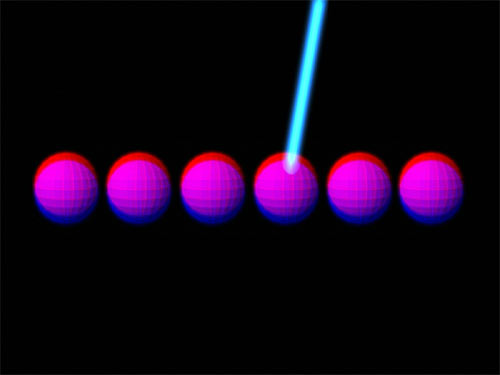Engineering the Computer of the Future, One Atom at a Time

Using computers based on the mind-boggling physics of the quantum world, researchers now hope to simulate reality on the molecular scale better than ever before.
Scientists want to simulate molecules on computers to better understand and improve how they might react – for instance, how a drug might behave in the human body. But attempts to simulate complex molecules using modern supercomputers fall short because increasing the number of atoms they have to analyze leads to an exponential spike in computation time.
"If you simulate anything larger than four or five atoms – for example, a chemical reaction, or even a moderately complex molecule – it becomes an intractable problem very quickly," said researcher James Whitfield, a quantum information chemist at Harvard University. At best, he explained, regular computers only can get a rough approximation of how these systems work.
Quantum computers
That is why scientists are now turning to quantum computers, which rely on the bizarre properties of atoms and the other construction blocks of the universe. The world becomes a fuzzy, surreal place at its very smallest levels – things can seemingly exist in two places at once or spin in opposite directions at the same time.
While normal computers represent data as ones and zeroes – binary digits known as bits that they express by flicking tiny switch-like transistors either on or off – quantum computers use quantum bits, or qubits (pronouced "cue-bits") that are both on and off at the same time. This enables them to carry out two calculations simultaneously. In theory, quantum computers could prove incredibly faster than regular calculators for certain problems because they can run through every possible combination at once.
The particles and molecules that scientists want to investigate are quantum objects.
Get the world’s most fascinating discoveries delivered straight to your inbox.
"If it is computationally too complex to simulate a quantum system using a classical computer, why not simulate quantum systems with another quantum system?" said researcher Alán Aspuru-Guzik, a quantum information chemist at Harvard.
Calculating with light
The quantum computer the researchers conducted their molecular simulations with relied on photons, or packets of light, as its qubits. While Aspuru-Guzik, Whitfield and their colleagues provided the software and performed key calculations, their collaborators in Australia assembled the hardware and ran the experiments.
Using this two-qubit computer, they simulated the smallest molecular system, the hydrogen molecule, and calculated its energy in terms of how it might react with other molecules. They ran their simulation process 20 times in a row, with each cycle working off the data from the last one, to achieve very precise values. "That's enough precision to simulate experiments with," Aspuru-Guzik told TechNewsDaily.
The great challenge that lies ahead is creating quantum computers with more qubits, which are needed to simulate molecules with more atoms. Although a 2,000-qubit computer would be roughly enough to, say, simulate cholesterol binding with a protein, the most qubits anyone has uncontestably made a quantum computer with so far is roughly a dozen, Aspuru-Guzik said.
"We are now working to make larger experiments to continue our successes with larger and larger systems," said he said.
The research was detailed online in a recent issue of the journal Nature Chemistry.

